Bedrock 600 guitar combo
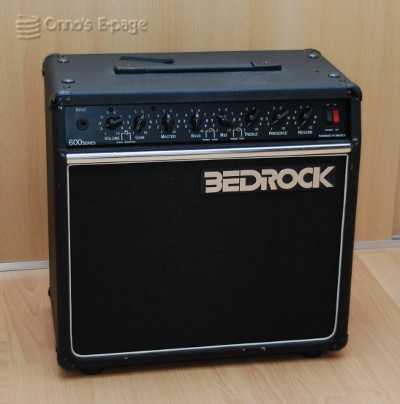

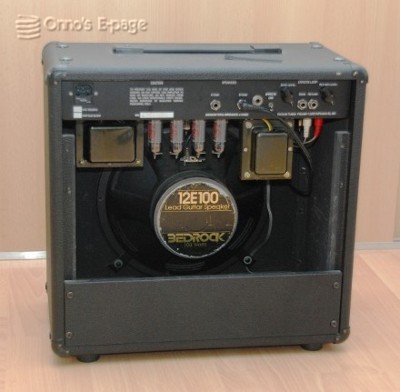
Bedrock 600, view from the back. The speaker magnet is really impressive.

The amplifier taken out of its cabinet.
I did several checks to see the amp really worked. Only, it squeeked at some settings of the controls. I wanted to investigate that. It turned out to be some 6.2kHz oscillation, apparently coming from the pre-amplifiers.
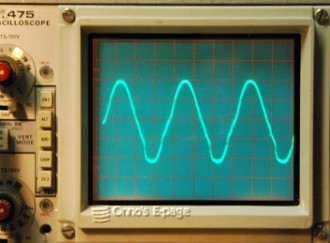
The output signal showing squigglies caused by the oscillation.
I wanted to find out if the oscillation originated from the pre-amps themselves or was caused by feedback from the output stage. That is plausible, as the anode leads of the output transformer are running quite closely to the pre-amps. I unsoldered one side of the coupling capacitor (C18) that links the pre-amps to the phase splitter. Then I plugged the load resistor back in and inserted a signal in the output amp. This worked as it should. I switched off and connected my signal generator to the input and my scope to the output of the pre-amp. Now I saw the oscillation again, although the output amp wasn't connected and could not cause any feedback. So I knew the pre-amp was oscillating of itself. Alas, looking for the cause, I made a little mistake that caused me some extra work. Fortunately, all ended well.
Besides the two 12AX7WB pre-amp valves, the Bedrock 600 uses semiconductor circuits in the pre-amplifier. It has two dual opamps, one for the reverb unit and one for the effects loop input and output. I decided it would be more relaxed to test these low voltage amplifiers first, without the high voltage supply. I connected external + and - 18V supplies. Immediately, the 6.2 kHz signal was back. It came from the reverb tank driving amplifier. It has a power stage consisting of a TIP29/TIP30 complementary power transistor pair driven by one half of a TL072P opamp. This amplifier was oscillating, the output signal went from rail to rail, 30Vtt.
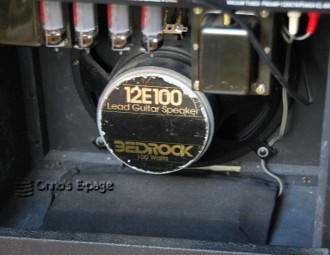
Down in the case, the reverb tank hiding in its pouch.
Though I wasn't 100% sure from the low-res schematic, I thought that the feed-back resistor should be 9.1 kΩ. The amplifier had an 18k resistor, though. I soldered a resistor in parallel, and the oscillation was gone. The driver amp was quiet now, both with and without the reverb tank. I didn't really worry about the lower driving signal into the reverb tank, as my friend had told me he wasn't using the reverb anyway.
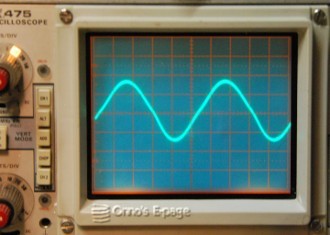
The output signal at 70% with minor cross-over distortion.
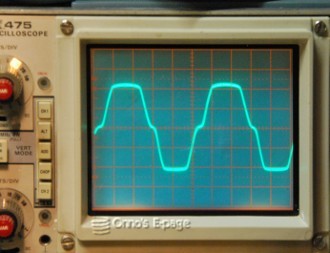
The output signal at overload clipped and severe cross-over.
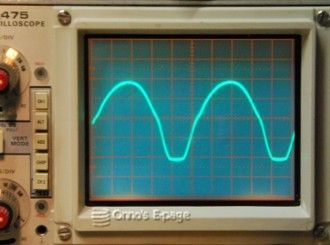
The output signal at 100% using the distortion function.
I tried some additional research on this Bedrock amplifier and its reverb amplifier. I found only one reference on a discussion panel, from someone citing exactly the same oscillation problem in the reverb driver amp.
Although this wasn't actually causing the fault, I think that from a standpoint of amplifier stability, the reverb control is placed in an unfortunate place. It is at the far right of the control panel, while the reverb preamp is all the way at the left. This means a long low-signal trace traveling along the PCB. But it has a low impedance, which probably saves the situation. I find this even more surprising because the amp is using four analogue switches (LED-LDR sets) in other places in the preamp, which is a bit expensive but allows the designer to prevent hum, noise and instability. Why not use such a LED-LDR set as a reverb control?
So the amp is working now but the fault isn't 100% certain. Maybe the oscillation was squelching the output amp. But why did the repairman say the power transformer was bad? Maybe the stand-by switch was dirty. Maybe the fuse hadn't been placed correctly. Anyway, the amplifier kept working fine during the months after.
I made some photographs showing the glowing output valves. Through a hole in the anodes you can see the characteristic blue haze in the output valves. I noticed on this picture that the second valve in the row is showing some more red light than the others. I suspected the output valves might not be matched correctly. This valve might draw more grid current than the other ones. So the next day I set up a test circuit and measured the chracteristics of all four output valves. They were very close. The valve that looked a bit more red was actually the one drawing least screen grid current. So there was nothing wrong with it.
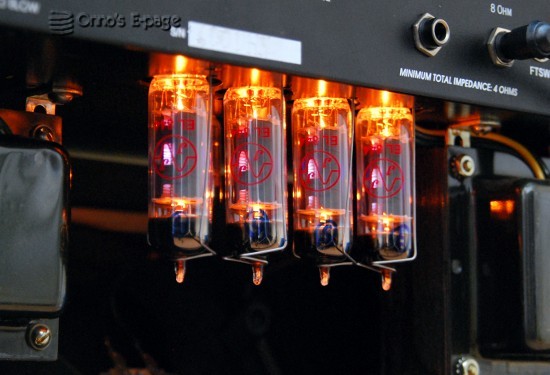
Catching the christmas atmosphere of glowing valves.
After this, the owner made a soundcheck and was happily surprised. Good.
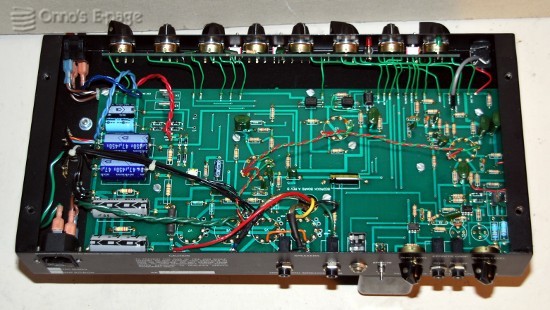
View of the bottom and PCB after repair.
| Output transformer | type MMC-11629 |
|---|---|
| Core: | 95x80x32mm (EI95, 32 mm stack) |
| Primary: | Raa=3.6-4kΩ(?), DC resistance 92Ω |
| Secondary: | Gnd - 4Ω - 8 Ω, DC resistance 0,3 + 0,2 Ω |
The primary impedance has been determined by multiplying the secondary impedance times squared voltage ratio at 50 Hz, giving 3.6k. I also measured the current drawn by the primary connected to 230V AC with an 8 Ω resistor connected to the secondary, giving 3.8k. The result surprises me a bit. For an output stage with 4 EL84's normally a primary impedance of 4k is specified. I expected it to be higher because of the high plate voltage. My results of 3.6-3.8 kΩ may be erroneous, but I don't see how. I would use a 4k P-P transformer rated for 50W if I needed a replacement.
| Power transformer | type MMC-11628 |
|---|---|
| Core: | 105x88x44mm (EI105, 44 mm stack) |
| Primary: | 115+115V, DC resistance 6.5Ω |
| Secondary 1: HV | 600V 250mA ct, DC resistance 65.5 Ω |
| Secondary 2: LV/bias | 32V 250mA ct, DC resistance 3.8 Ω |
| Secondary 3: heaters | 6.3V 4A, DC resistance <0.1 Ω |
So in the second half of 2014, I borrowed the Bedrock and my son used it for his first guitar experience. The amplifier kept working fine and gives a warm rock&roll sound. The reverb unit gives a nice extra to the sound. The amp went back to its owner after this and my son went on using his own amp. and the Geloso G215AN.
Copyright © 2014,2015 by Onno's E-page published 2014-04-06, last updated 2015-01-31